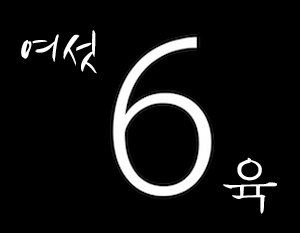So here’s a seemingly simple question with a surprisingly complicated answer: How do you say “6” in Korean?
As native speakers are well aware and as beginning students of Korean quickly learn, there are at least two ways.
As native speakers are well aware and as beginning students of Korean quickly learn, there are at least two ways.
I’m going to work my way toward a little mystery — a usage of “6” in Korean whose pronunciation isn’t immediately obvious, at least not to a non-native speaker like me.
But we’re going to take a bit of a circuitous route to get there.
But we’re going to take a bit of a circuitous route to get there.
There are two sets of numbers in regular use in Korean. One set is the native Korean numbers that have been in the language for thousands of years.
The native numbers from one to ten are:
1.hana 하나
2.tul 둘
3.set 셋
http://4.net"> http://4.net 넷
5.tasŏt 다섯
6.yŏsŏt 여섯
7.ilgop 일곱
8.yŏdŏl 여덟
9.ahop 아홉
10.yŏl 열
1.hana 하나
2.tul 둘
3.set 셋
http://4.net"> http://4.net 넷
5.tasŏt 다섯
6.yŏsŏt 여섯
7.ilgop 일곱
8.yŏdŏl 여덟
9.ahop 아홉
10.yŏl 열
The other set is the so-called Sino-Korean numbers, which were borrowed from Chinese around 1,500 years ago. They are:
http://1.il"> http://1.il 일
2.i 이
3.sam 삼
http://4.sa"> http://4.sa 사
5.o 오
6.yuk 육
http://7.ch"> http://7.ch ’il 칠
8.p’al 팔
9.ku 구
10.sip 십
http://1.il"> http://1.il 일
2.i 이
3.sam 삼
http://4.sa"> http://4.sa 사
5.o 오
6.yuk 육
http://7.ch"> http://7.ch ’il 칠
8.p’al 팔
9.ku 구
10.sip 십
Both are in common use, but usually only one set is used in any given context. For example, when telling time, the native Korean numbers are used for the hour and the Sino-Korean numbers are used for the minute.
So “6:06” or “6시 6분” is:
yŏsŏt-si yuk-pun & #39;six-hour six-minute& #39;
So “6:06” or “6시 6분” is:
yŏsŏt-si yuk-pun & #39;six-hour six-minute& #39;
As in the example just given, whenever a Korean speaker sees the written numeral "6", they will determine from context whether it represents native Korean yŏsŏt or Sino-Korean yuk.
“6일” can only be yuk-il & #39;sixth day (of the month)& #39;
“6명” can only be yŏsŏt-myŏng & #39;six people& #39;
“6일” can only be yuk-il & #39;sixth day (of the month)& #39;
“6명” can only be yŏsŏt-myŏng & #39;six people& #39;
You may have noticed that at the top of this thread I slyly said there are *at least* two ways to pronounce “6”.
Hold that thought! We’ll get back to it.
Hold that thought! We’ll get back to it.

 Read on Twitter
Read on Twitter
 TIME TRAVEL ALERT: Strap on your seat belt, because we will be journeying back in time in this thread — all the way back to 2015!" title="https://abs.twimg.com/emoji/v2/... draggable="false" alt="⏳" title="Sanduhr mit fließendem Sand" aria-label="Emoji: Sanduhr mit fließendem Sand"> TIME TRAVEL ALERT: Strap on your seat belt, because we will be journeying back in time in this thread — all the way back to 2015!" class="img-responsive" style="max-width:100%;"/>
TIME TRAVEL ALERT: Strap on your seat belt, because we will be journeying back in time in this thread — all the way back to 2015!" title="https://abs.twimg.com/emoji/v2/... draggable="false" alt="⏳" title="Sanduhr mit fließendem Sand" aria-label="Emoji: Sanduhr mit fließendem Sand"> TIME TRAVEL ALERT: Strap on your seat belt, because we will be journeying back in time in this thread — all the way back to 2015!" class="img-responsive" style="max-width:100%;"/>


